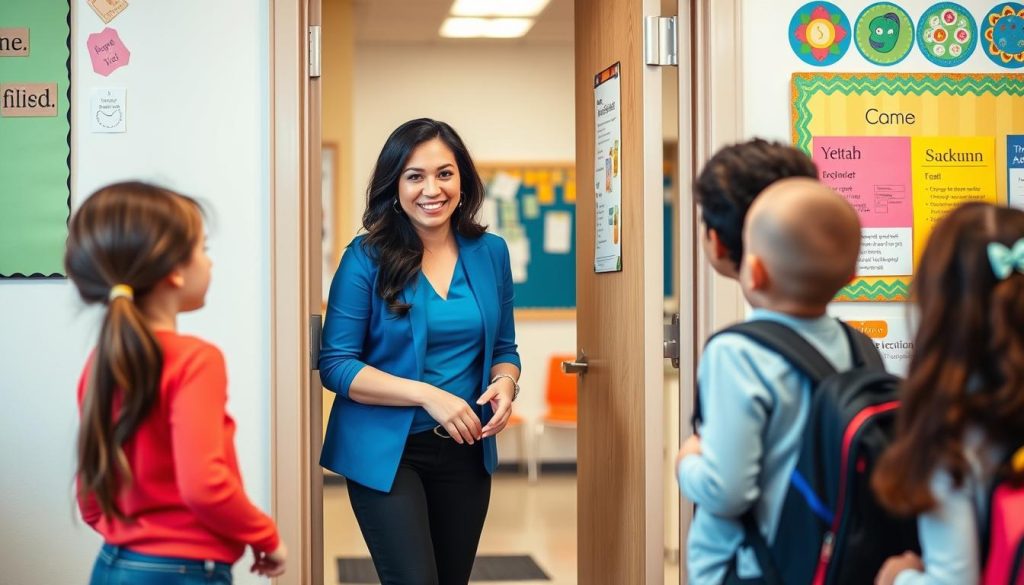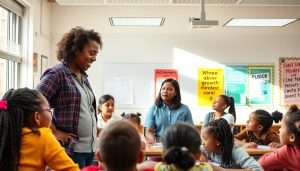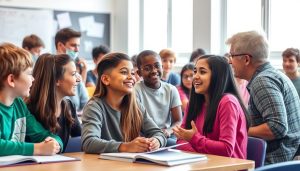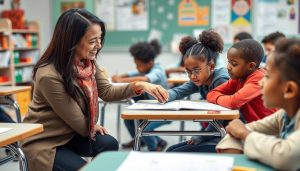Why Building and Sustaining Classroom Relationships Matters
Before diving into specific strategies, let’s understand why classroom relationships are so crucial. The science of learning and development demonstrates that positive school-based relationships directly support and enhance student learning and well-being. When students feel connected to their teachers and peers, they experience:
- Reduced anxiety and stress
- Increased engagement and motivation
- Greater academic achievement
- Improved attendance and participation
- Better social and emotional development
For teachers, investing in relationship-building teacher skills pays dividends in classroom management, student cooperation, and overall job satisfaction. A classroom built on trust and mutual respect creates an environment where everyone can thrive.
Enhance Your Teacher Skills in Relationship Building
Discover professional development opportunities designed specifically for building stronger connections with your students.
Daily Practices for Building and Sustaining Classroom Relationships
The foundation of strong classroom relationships is built through consistent daily practices. These simple yet powerful routines help establish trust and connection from the very first day of school.
1. Morning Meetings
Starting the day with a brief community gathering sets a positive tone and gives students a chance to connect. These meetings can include greetings, sharing time, and a quick group activity. Teacher skills in facilitating these meetings help create a sense of belonging and community.
For middle and high school teachers, consider adapting this approach to work within your schedule—perhaps at the beginning of each class period or during advisory time. Research shows that regular morning meetings can reduce classroom disruptions by up to 75%.
2. Greeting at the Door
One of the simplest yet most effective relationship-building practices is greeting each student individually at the door. This brief interaction gives you a chance to check in, make eye contact, and start the class on a positive note.
Kindergarten teacher Falon Turner makes this a priority each morning, using the opportunity to gauge students’ emotional states: “Do they look escalated, triggered, or upset?” High school teacher David Tow takes a similar approach, asking older students, “How are you doing?” and following up with “Are you sure?” if he senses something might be wrong.
3. Name Tents/Name Toss
Learning and correctly pronouncing students’ names is a fundamental teacher skill that shows respect and builds trust. At the beginning of the year, have students create name tents with the phonetic spelling of their name and decorations that represent their interests.
To help everyone learn names, try the name toss game: arrange students in a circle, introduce a ball, and have each student say their name before tossing the ball to another student.
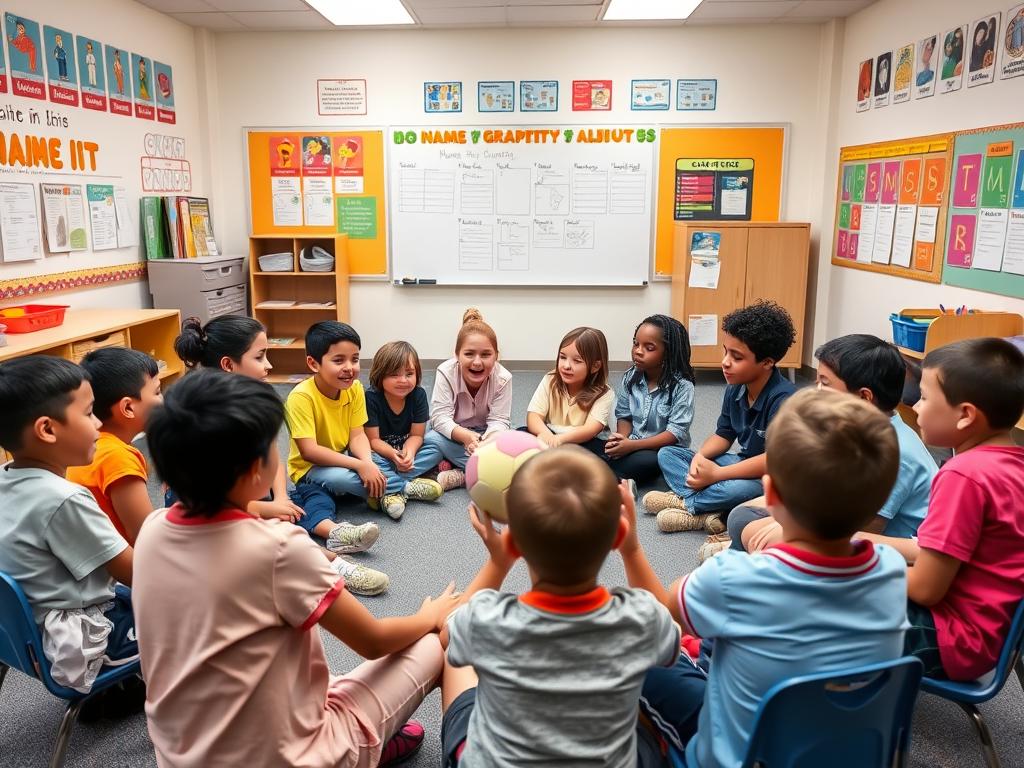
4. Attendance Check-In
Transform routine attendance into a relationship-building opportunity by replacing the standard “Here” with more engaging prompts. Ask students to share their current mood, a word they’ve been thinking about, or something they’re looking forward to that day.
This simple shift gives students a voice and helps you gain insights into their emotional states and interests, strengthening your connection with each individual.
Getting to Know Your Students: Building and Sustaining Classroom Relationships Through Understanding
Developing teacher skills in understanding your students as individuals is essential for building meaningful relationships. These strategies help you learn about students’ interests, backgrounds, and unique qualities.
5. Get-to-Know-You Surveys
Early in the school year, use surveys to gather information about your students’ interests, learning preferences, and backgrounds. Tools like Google Forms, SurveyMonkey, or Poll Everywhere make this easy to implement.
Include questions that range from icebreakers like “What’s the best gift you’ve ever received and why?” to more academically oriented questions such as “What scares you most about this class?” Anonymous responses often reveal insights students might not share otherwise.
6. All About Me Presentations
Ask students to create short presentations about themselves, including facts, interests, and media that represent who they are. To model the activity and ease pressure, create and share your own presentation first.
For younger students or those who might be uncomfortable with presentations, consider alternatives like “I Am” lists with sentence starters they can complete: “I am happy when ____,” “I hope to ____,” or “I am most scared when ____.”
7. Dialogue Journals
Exchange short letters with individual students throughout the year using simple notebooks passed back and forth. Initial entries can build off surveys or other get-to-know-you activities: “You wrote that you play basketball. Me too! Who is your favorite player?”
This ongoing written conversation helps you connect with students individually and improves their writing skills. The frequency can be adjusted to fit your schedule—even once a week can make a significant difference.
8. Two-Minute Talks
Set aside two minutes at the beginning or end of class for students to discuss questions in small groups. These can be lighthearted prompts like “Which restaurant serves the best pizza in town?” or more reflective questions.
To mix things up, ask students to find random partners using prompts like “Find someone wearing the same color shoes as you.” These brief interactions build community and help students connect with peers they might not typically talk to.
Ready to Transform Your Classroom Relationships?
Access ready-to-use templates, surveys, and activities that make relationship-building simple and effective.
Community-Building Strategies for Classroom Relationships
Creating a sense of belonging and community in your classroom requires intentional practices that foster connection among all students. These strategies help build a supportive learning environment where relationships can flourish.
9. Class Playlists
Music creates instant connections. Ask students to suggest songs for a classroom playlist that can be played during appropriate times like independent work or class transitions. This simple activity celebrates student interests and creates a shared experience.
The question “What is your favorite song?” or “Who is your favorite artist?” can become a group brainstorming activity, giving students the chance to bond over music before sharing their choices.
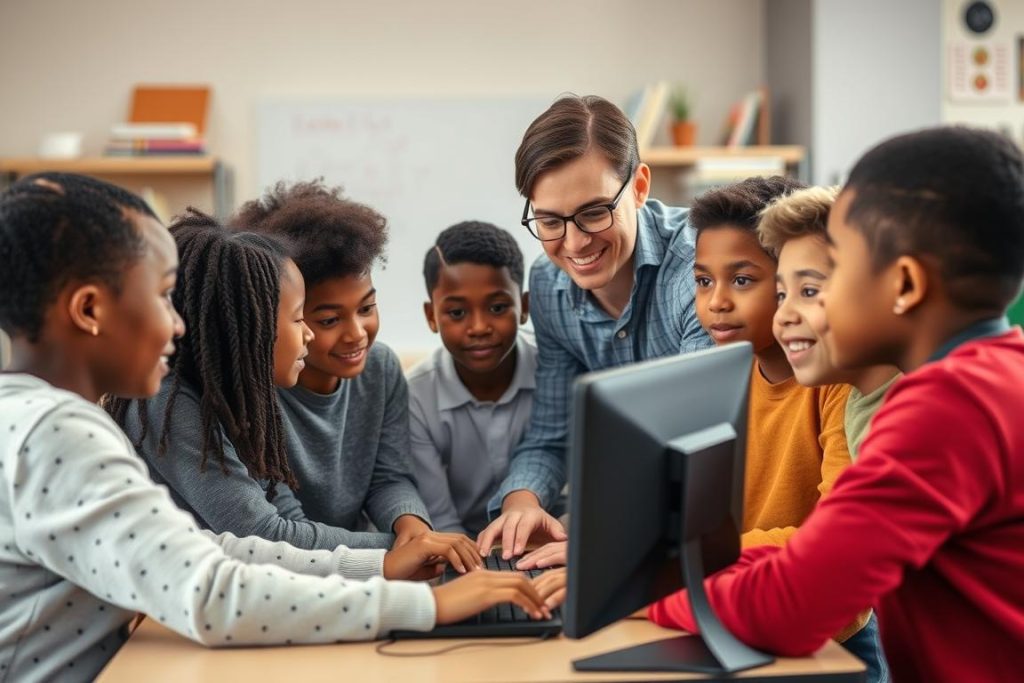
10. Shout-Out Boxes
Place a decorated box in your classroom where students can submit written “shout-outs” to recognize their peers for good work, helpfulness, or other positive actions. At the end of each week, take time to read some or all of the shout-outs aloud.
This practice encourages students to notice and appreciate each other’s contributions, strengthening peer relationships and creating a positive classroom culture.
11. Daily Dedications
Implement a routine where each day, one student delivers a 30-to-60-second presentation dedicating their day’s learning to someone they admire or want to honor. This could be a family member, a historical figure, or anyone significant to them.
This practice, developed by high school humanities teacher Henry Seton, creates a “prized moment in the day” that fosters community and reignites motivation for learning.
12. Appreciation, Apology, Aha
End class periods or school days with this simple closing activity: students stand in a circle and one by one share an appreciation for another person in the room, an apology they’d like to offer, or an “aha” moment they experienced that day.
According to high school teacher Aukeem Ballard, “The whole purpose is just to have some space to reflect on our day,” adding that “these types of appreciations and community recognitions can go a long way towards building bonds.”
Creating Identity-Safe Classrooms: Essential for Building and Sustaining Classroom Relationships
Identity safety is crucial for building trusting relationships in diverse classrooms. When students feel their identities are valued and respected, they’re more likely to engage fully in learning and connect with teachers and peers.
13. Identity Portraits
Give students crayons and colored pencils and ask them to draw an outline of their head and shoulders. After drawing a line down the middle, they add skin tone, clothing, and other visible features on one side, and on the other side, they list words that describe their identity—ethnic background, hobbies, religion, etc.
Middle school teacher Shana V. White displays these portraits in her classroom so students “know that all those identities are accepted in this place.” This activity helps students feel seen and valued for who they truly are.
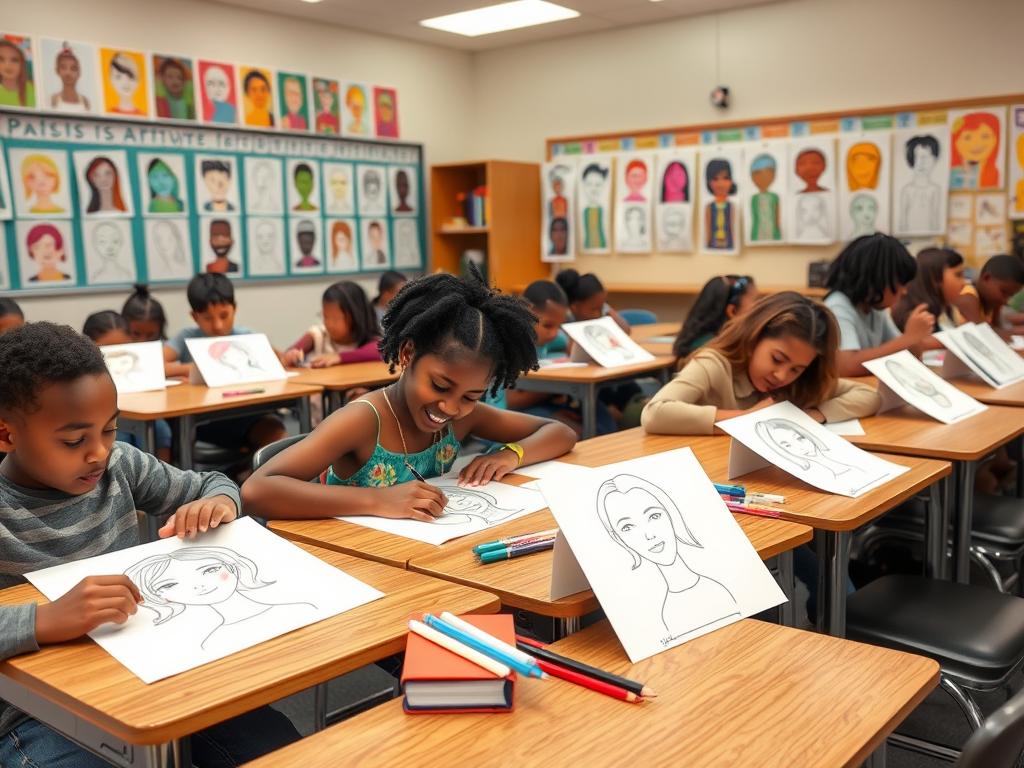
14. Diverse and Culturally Relevant Content
Incorporate materials and examples that reflect the diverse backgrounds and experiences of your students. This might include literature by authors from various cultures, historical perspectives beyond the mainstream narrative, or examples that connect to students’ lived experiences.
When students see themselves represented in the curriculum, they feel valued and more connected to the learning process. This teacher skill of cultural responsiveness is essential for building trusting relationships with all students.
15. Physical Spaces That Celebrate Diversity
Create classroom displays that reflect cultural plurality and the diversity of your student population. Include posters, quotes, artwork, and student work that represents various cultures, achievements, and perspectives.
The physical environment sends powerful messages about who belongs and what is valued in your classroom. Making sure all students see themselves represented helps build a foundation of trust and belonging.
Develop Cultural Responsiveness Teacher Skills
Learn how to create culturally responsive learning environments that honor all student identities.
Personalized Approaches to Building and Sustaining Classroom Relationships
Some of the most powerful relationship-building strategies involve focused attention on individual students. These approaches help you connect with each student on a personal level, especially those who might need additional support.
16. 5×5 Assessment
Choose five students to think about for five minutes each day. Consider questions like: What have I noticed about them recently? What behavior patterns? What outside interests, struggles, values, and goals have they revealed?
After this reflection, interact with these students the same day and ask a question that came up during your thinking—for instance, “Mike, a couple of days ago you were talking about your dad’s new job. How will that change things for you and your family?”
17. 2×10 Strategy
For two minutes each day, ten days in a row, have a personal conversation with a challenging student about anything they’re interested in (as long as it’s appropriate). This simple strategy, developed by psychologist Raymond Wlodkowski, has been shown to lead to an 85% improvement in that student’s behavior.
The 2×10 strategy is particularly effective for connecting with students who may be struggling behaviorally or emotionally. This targeted approach demonstrates that you care about them as individuals beyond academic performance.
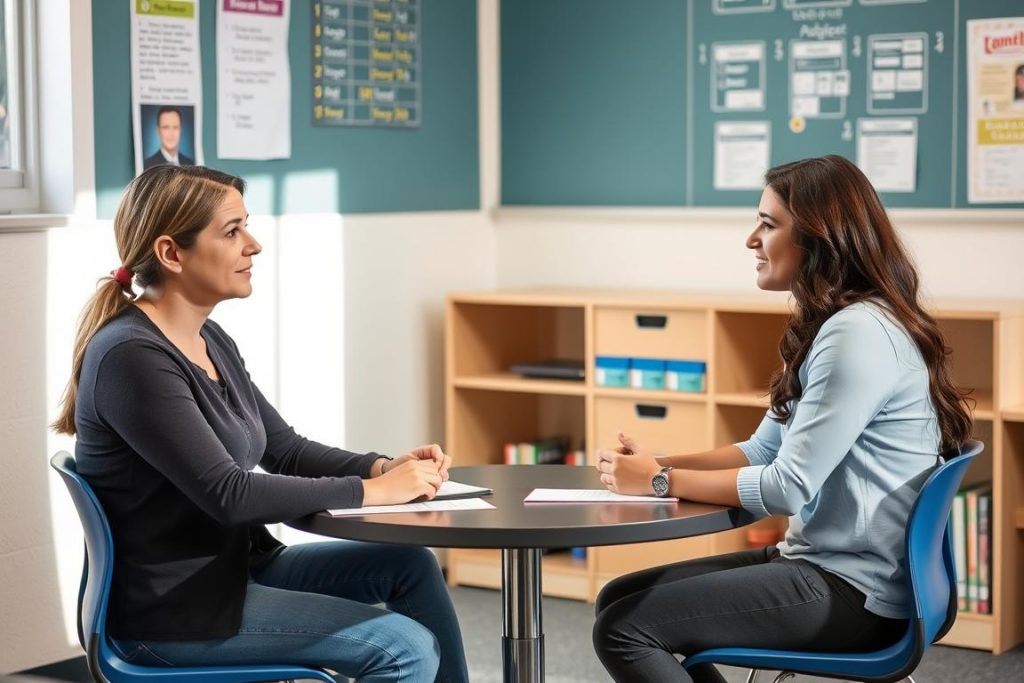
18. Friendly Fridays
At the beginning of each week, have a group of students secretly select a classmate’s name and create a friendly art project—a note, card, or uniquely designed message—to present to that classmate on Friday.
This activity, used by fourth-grade teacher Elizabeth Peterson, promotes “kindness, friendship, reflection, and social awareness” while helping students connect with peers they might not typically interact with.
19. Gratitude Walls
Dedicate a section of your classroom wall for students to post notes, photos, or sketches expressing gratitude for classmates, teachers, or others in their lives. Once a week, take time for students to share some of what has been added to the wall.
This practice helps students appreciate “the good in others” and creates a positive classroom atmosphere where relationships can flourish.
Relationship-Centered Classroom Management
Effective classroom management is built on a foundation of strong relationships. These strategies help create a structured, predictable environment where relationships can thrive.
20. Assign Seats (But Change Them Often)
Strategically assigning seats gives students opportunities to work with different classmates and “learn about each other.” Change seating arrangements periodically—once a month or so—to maximize these interactions.
After each change, make time for short icebreakers so students can get to know their new neighbors. This approach helps prevent cliques and ensures all students have opportunities to connect with diverse peers.
21. Establish Shared Values and Norms
Co-create classroom agreements with your students rather than imposing rules from above. This collaborative process builds student ownership and investment in classroom norms while helping them understand what’s expected.
Display these agreements prominently and refer to them consistently. When issues arise, frame discussions around these shared values rather than personal criticism. This approach maintains relationships even during challenging moments.
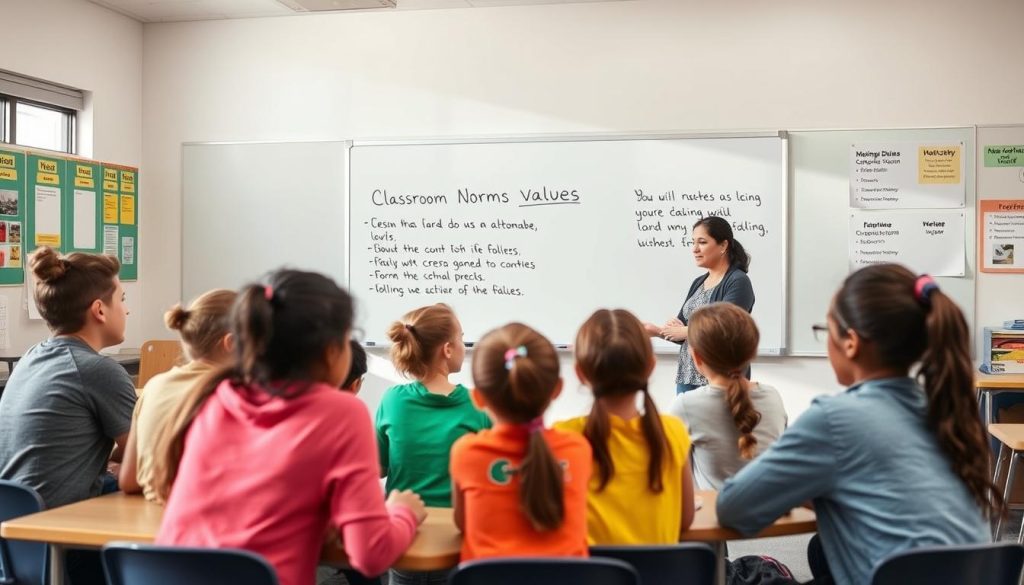
22. Restorative Practices
When conflicts arise, use restorative approaches that maintain relationships rather than punitive measures that damage them. This includes using affective statements that focus on your feelings rather than criticizing the student: “I felt disappointed when I saw the incomplete assignment” instead of “You’re being irresponsible.”
Impromptu conferences during class time can address emerging issues before they escalate. A quick, private conversation with questions like “Is there anything going on I should know about?” or “How can I support you right now?” can refocus a student without damaging your relationship.
Master Relationship-Centered Classroom Management
Learn proven strategies for managing your classroom through strong relationships rather than control.
Amplifying Student Voice and Agency
Building and sustaining classroom relationships requires giving students opportunities to express themselves and take ownership of their learning. These strategies help amplify student voice and agency.
23. Student-Led Conferences
Replace traditional parent-teacher conferences with student-led conferences where young people actively participate in and facilitate discussions about their progress. This approach gives students agency in their learning journey and strengthens the relationship between teachers, students, and families.
Effective student-led conferences happen more frequently than traditional conferences and focus on collaborative goal-setting rather than just reporting on performance. This approach develops important teacher skills in facilitation and coaching rather than just evaluation.
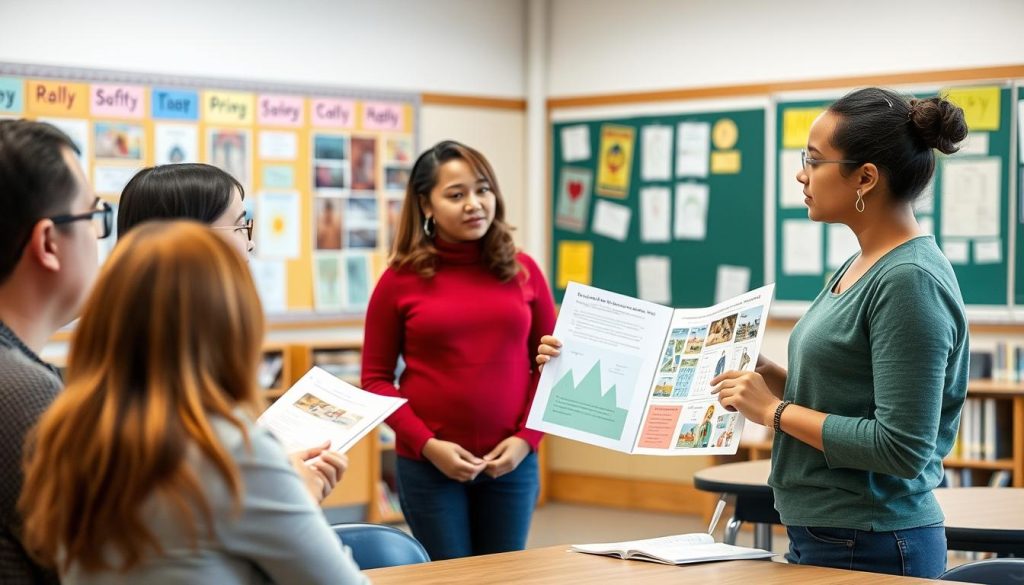
According to a case study at Gateway Public Schools in San Francisco, these conferences transform the traditional parent-teacher dynamic by putting students at the center of the conversation about their learning. Students prepare presentations about their work, reflect on their progress, and set goals for future growth with input from both teachers and parents.
This collaborative approach not only builds stronger relationships between all stakeholders but also develops students’ self-awareness, communication skills, and ownership of their education.
Supporting Student Well-Being to Strengthen Classroom Relationships
Attending to students’ physical and emotional well-being is an essential component of building strong relationships. These practices help create a classroom environment where students feel safe, supported, and ready to learn.
Breathing and Movement Exercises
Incorporate short breathing or movement exercises at the beginning of class or as breaks during instruction. These activities help students regulate their emotions, reduce stress, and improve focus.
Simple practices like guided breathing, gentle stretching, or brief movement breaks require minimal time but can significantly impact students’ ability to engage in learning and positive interactions.
Restoration Spaces
Create a designated area in your classroom where students can go to self-regulate when they’re feeling overwhelmed or need to refocus. This might include comfortable seating, calming activities, and visual reminders of self-regulation strategies.
Having this option available communicates that you understand and respect students’ emotional needs, strengthening your relationship with them even during challenging moments.
Mindfulness Practices
Introduce age-appropriate mindfulness activities that help students develop awareness of their thoughts, feelings, and physical sensations. These practices support emotional regulation and stress management, creating a foundation for positive relationships.
Research shows that mindfulness practices benefit brain development, learning, and stress management—particularly during adolescent development when emotional regulation skills are still forming.
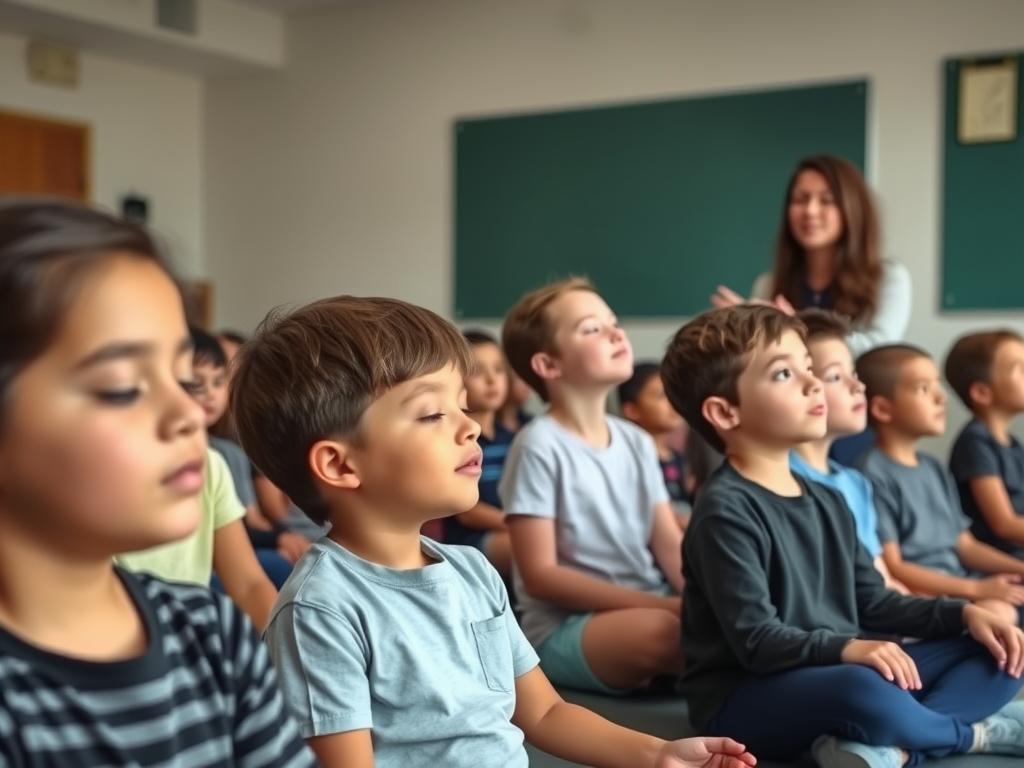
Conclusion: The Ongoing Journey of Building and Sustaining Classroom Relationships
Building and sustaining classroom relationships isn’t a one-time event but an ongoing process that requires consistent effort and attention. The 23 strategies outlined in this article provide a comprehensive toolkit for creating a classroom environment where meaningful connections can flourish.
Remember that relationship-building teacher skills develop over time through practice, reflection, and adaptation. What works for one group of students may need adjustment for another. The key is maintaining a genuine commitment to knowing your students as individuals and creating a classroom community where everyone feels valued and connected.
By implementing these strategies consistently, you’ll create a foundation of trust and mutual respect that enhances learning, reduces behavioral issues, and makes teaching more rewarding. Most importantly, you’ll be making a lasting positive impact on your students’ educational experience and personal development.
Continue Your Professional Growth
Explore comprehensive courses and resources to further develop your teacher skills in building and sustaining classroom relationships.
What relationship-building strategies have worked best in your classroom? Which of these approaches are you most excited to try? The journey of building and sustaining classroom relationships is one we’re all on together as educators committed to creating positive learning environments for every student.

